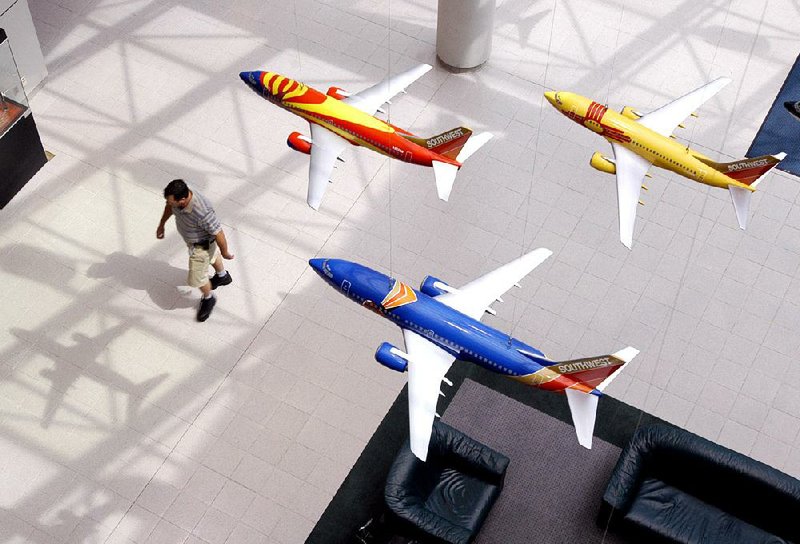Boeing plans to test whether new nonstick aircraft coatings will provide a simple solution to an age-old aviation hazard: icing.
The paints are designed to cause ice to slide harmlessly off a plane's wings and flight-control surfaces, where dangerous buildups can cause stalls or make aircraft difficult to control. They may help with another issue as well: bug splats that disrupt the flow of air over a jetliner's wings.
Those are among technologies that Boeing and Brazil's Embraer are to unveil Thursday, along with an Embraer E-175 jet that will be converted into a flying laboratory. It's the first time Boeing has tested potential breakthroughs and processes on another manufacturer's aircraft under its ecoDemonstrator program, an effort aimed at boosting innovation and mitigating aviation's impact on the environment.
"We are the biggest aerospace company in the world and we do a lot of work on advanced concepts," Mike Sinnett, vice president of product development for Boeing's commercial airplanes division, said in June. "And it's really cool stuff."
The U.S. plane-maker, which celebrates its centennial Friday, also plans to showcase technologies that may change flying for passengers and pilots in a special pavilion at the Farnborough International Airshow in the U.K.
Within five years, Boeing planes may boast projection lighting that shows gate information or video images of a destination on the walls inside a jet cabin, Sinnett said. Cockpit displays on Boeing's upgraded 777X, set to debut in 2020, will be the first to have interactive touch screens that respond to a pilot's commands similarly to an iPad's controls.
Boeing engineering teams also are studying longer-term projects, like hybrid electric propulsion, all-electric aircraft and a 21st-century follow-up to the supersonic Concorde jets.
Since 2012, Boeing has used the ecoDemonstrator program to test more than 50 technologies using three airplanes as flying test beds: a 737-800, Boeing's fourth 787 flight-test airplane and a 757.
The ice-averse paints, supplied by PPG Industries, build on research Boeing conducted last year with NASA on coatings designed to prevent insect remains from sticking to the leading edge of a 757's wing. Studies have shown that keeping the airflow smooth, or laminar, over a wing can reduce fuel consumption as much as 6 percent, according to NASA. Even bug guts can cause turbulent wedges that interrupt laminar flow, increasing drag and fuel use.
This year's ecoDemonstrator will test a proprietary paint, not commercially available, designed to reduce icing and accumulation of dirt and bugs, said Peter Pedraza, a Boeing spokesman. The coating may save energy by reducing the use of bleed -- hot air diverted from the engines -- or electrical systems that prevent icing on aircraft wings.
Researchers at the University of Michigan have developed a rubbery coating that makes ice slide off airplanes or transmission lines with the force of gravity or wind. Their product was described in a paper published in the journal Science Advances in March. They are working with a plane-maker to hone the spray-on coatings, said Gabe Cherry, a university spokesman. He declined to divulge the company's name.
SundayMonday Business on 07/11/2016
